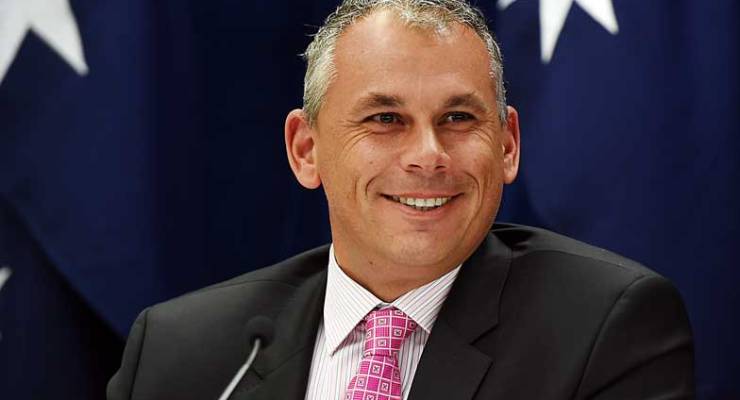
If disunity in politics truly is death, the Northern Territory government’s date with the executioner’s axe tomorrow will not have come soon enough.
It’s been four years since the Country Liberal Party came to power in only the second change of government since the Parliament was established in 1974, and in that time there have been six deputy chief ministers, four changes of treasurer and — by Labor’s count — 18 ministerial reshuffles.
The CLP changed leaders just six months after the election victory of August 2012, and would have done so again in February 2015 if the incumbent, Adam Giles, had not pulled coup plotters sullenly back into line by threatening to lead his supporters across the floor and bring down the government.
Four of the 16 members elected for the party in 2012 are now running as independents, and a fifth has declared her support for the Labor candidate seeking to fill her vacancy.
Tomorrow’s election comes at a time when the territory’s affairs have been under the national spotlight, owing to the abuses at the Don Dale Youth Detention Centre exposed by the ABC’s Four Corners program.
[Australia has always kept its darkest abuses out of sight]
However, Don Dale’s status as an election issue is ambiguous — the problems there go back to Labor’s time in office, and there would be many in the community for whom juvenile detention rates as an issue only to the extent that they would like to see more of it.
Labor’s unassailable position was actually established in April last year, when it managed to dispatch embattled leader Delia Lawrie in a relatively efficient fashion.
The party has since been led by Michael Gunner, who has performed more than adequately under the circumstances by keeping the Opposition free from serious controversy and offering a presentable face to the media.
The federal election of July 2 offered a foretaste of what likely awaits the CLP tomorrow, with both the territory’s seats swinging to Labor by 7.5%.
The similarity between the two results was striking given the demographic divide between Solomon, which covers Darwin and has traditionally gone down to the wire, and Lingiari, which has the largest indigenous population share of any seat in Australia and has always been held by Labor.
For the territory’s distinctive parts to move in lock step is unusual, and certainly not what happened as the Country Liberal Party rebuilt itself after Labor’s landslide re-election in 2005.
The first stage was recovery in Darwin, where the party seized six of Labor’s 12 seats in 2008 to come within a single seat of victory.
Labor was able to retain its remaining seats in Darwin in 2012, but was sunk by an unanticipated rebellion in the bush that delivered four seats to the CLP, including three with indigenous-majority populations.
This time, the government looks to be facing a simultaneous collapse on both fronts.
Both sides appear to anticipate a Labor sweep through Darwin, with locally targeted advertising instead focusing on Palmerston and Alice Springs — the only areas that were left to the CLP when they were reduced to four seats in 2005.
The CLP is also unlikely to repeat its performance in the bush at the last election, as two of its members from 2012 have since quit the party.
One of these is the formidable Alison Anderson, who is retiring after an 11-year career in which she jumped from Labor to the CLP to Palmer United, before seeing out the latter part of her last term as an independent.
[Northern Territory election guide]
Anderson has voiced support for Labor candidates in her own seat of Namatjira and neighbouring Stuart, where her former ally Bess Price has remained with the CLP.
Elsewhere, a number of seats the CLP might ordinarily rely on to secure a majority look likely to be held by independents.
Ousted former chief minister Terry Mills is well placed in his bid for revenge on the CLP in his old seat of Blain, located in the Darwin satellite centre of Palmerston.
The seat is being vacated after Nathan Barrett, who narrowly retained it for the CLP in the byelection after Mills’ resignation in early 2014, became embroiled in a sexting scandal.
Another two ex-CLP members, Kezia Purick in the Darwin outskirts seat of Goyder and Robyn Lambley in the Alice Springs seat of Araluen, have also landed on the right side of history by landing on the wrong side of their old party.
Labor hasn’t been entirely immune to such difficulties — former deputy leader Gerry McCarthy faces a challenge from the Labor member who preceded him in his Tennant Creek-based seat of Barkly, and Delia Lawrie is attempting to keep her career afloat as an independent in her northern Darwin seat of Karama.
However, Labor has more than enough ducks lined up in both Darwin and the bush that it can wear a few isolated mishaps, if indeed any transpire.
*To read more from Crikey‘s William Bowe, visit The Poll Bludger








Bloody 4 Corners?